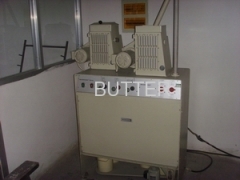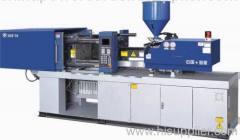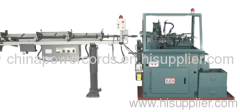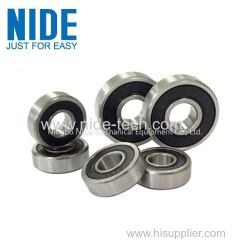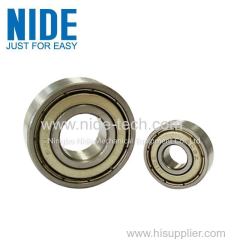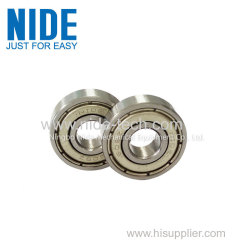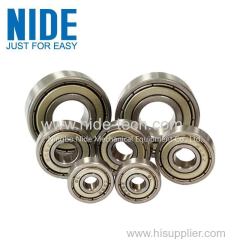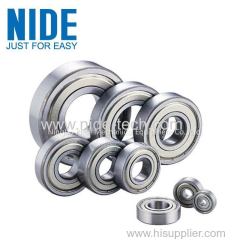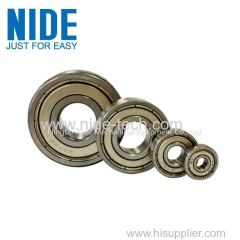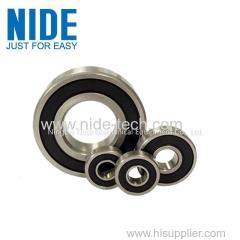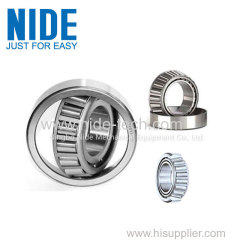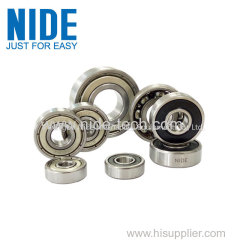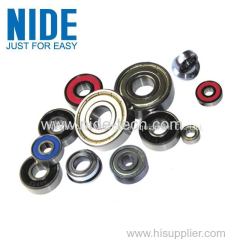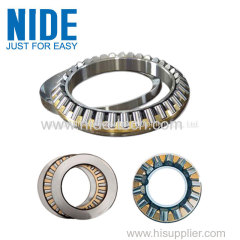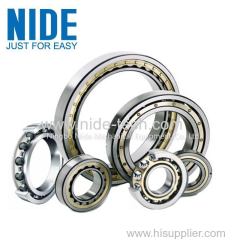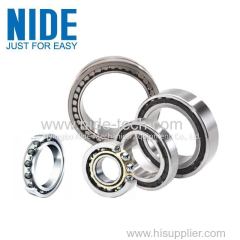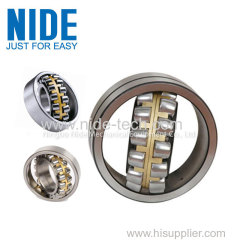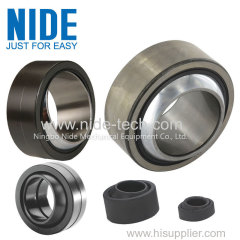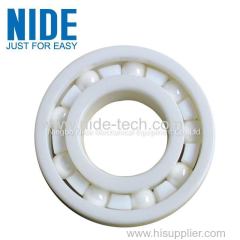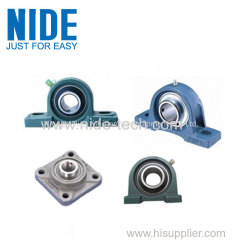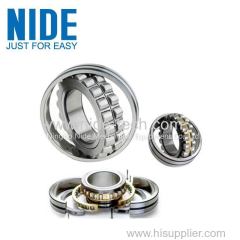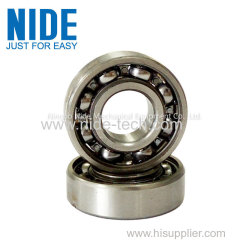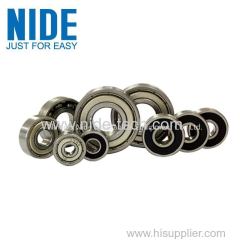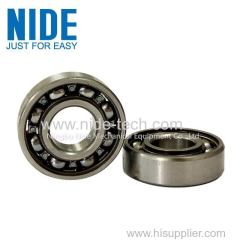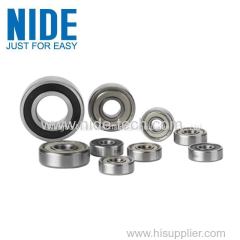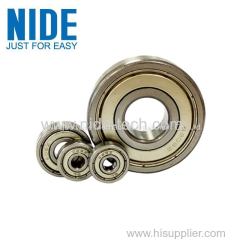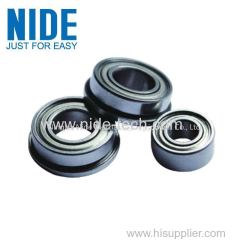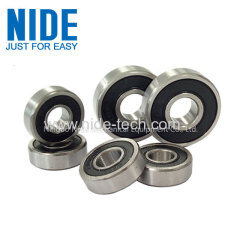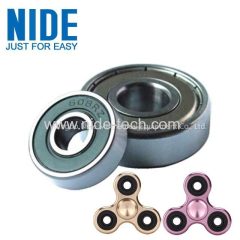
|
Ningbo Nide Mechanical Equipment Co., Ltd.
|
68 series deep groove ball bearing
| Price: | 0.5 USD |
| Payment Terms: | T/T,L/C |
| Place of Origin: | Zhejiang, China (Mainland) |
|
|
|
| Add to My Favorites | |
| HiSupplier Escrow |
Product Detail
68 series deep groove ball bearings.
68 series ball bearing with high quality and competitive price, welcome to inquiry.
| Bearing Specification 68 Series |
Basic Bearing No. | Bore | Outer Diameter | Width | Radius | Basic Load | Maximum Run out Speed | Weight | ||
Dynamic | Static | Grease | Oil | ||||||
685 686 687 688 689 | 5 1969 6 .2362 7 .2756 8 .315 9 .3543 | 11 .4331 13 .5118 14 .5512 16 .6299 17 .6693 | 3 .1181 3.5 .1378 3.5 .1378 4 .1575 4 .1575 | 0.15 .006 0.15 .006 0.15 .006 0.2 .008 0.2 .008 | 0.715 1.08 1.17 1.26 1.72 | 0.282 0.44 0.51 0.585 0.82 | 35000 33000 31000 29000 28000 | 45000 42000 40000 38000 36000 | 0.0011 0.0019 0.0021 0.0031 0.0032 |
6800 6800W7 6801 6802 6803 6804 6805 6806 6807 6808 6809 6810 | 10 .3937 10 .3937 12 .4724 15 .5906 17 .6693 20 .7874 25 .9843 30 1.1811 35 1.3780 40 1.5748 45 1.7717 50 1.9685 | 19 .7480 19 .7480 21 .8268 24 .9449 26 1.0236 32 1.2598 37 1.4567 42 1.6535 47 1.8504 52 2.0472 58 2.2835 65 2.5591 | 5 .1969 7 .2756 5 .1969 5 .1969 5 .1969 7 .2756 7 .2756 7 .2756 7 .2756 7 .2756 7 .2756 7 .2756 | 0.3 .012 0.3 .012 0.3 .012 0.3 .012 0.3 .012 0.3 .012 0.3 .012 0.3 .012 0.3 .012 0.3 .012 0.3 .012 0.3 .012 | 1.83 1.83 1.92 2.08 2.81 4.00 4.30 4.70 4.90 5.10 6.40 6.60 | 0.925 0.925 1.04 1.26 1.72 2.47 2.95 3.65 4.05 4.40 5.65 6.10 | 26000 26000 22000 20000 19000 17000 15000 13000 11000 9000 7000 5000 | 34000 34000 30000 28000 26000 22000 19000 17000 15000 13000 11000 9000 | 0.005 0.006 0.006 0.007 0.008 0.019 0.022 0.026 0.029 0.033 0.040 0.052 |
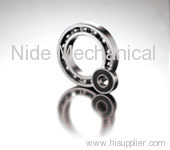
What is deep groove ball bearing?
Ball bearings, also known as anti-friction bearings, are small metallic or ceramic spheres used to reduce friction between shafts and axles in a number of applications. Ball bearings are often used in a series to absorb the weight placed on a moving part, or in individual cages to reduce friction in axle assemblies. Most are manufactured to meet very exacting standards of roundness, since any deformation can cause the moving parts to fail unexpectedly.
Manufacturing ball bearings is surprisingly similar to forming balls of dough. A supply of metal wire approximately the same diameter as the bearings is placed in a machine with two plates designed as hemispheres. When the two halves are brought together forcefully, a rough metal ball is formed. The problem is, some additional metal shards called flashing still remain. The balls are then placed in another machine that removes the flashing to create a perfect state of roundness.
This second machine consists of two grooved plates, one with an open notch to receive the ball bearings. As this machine fills with unfinished balls, the upper grooved plate begins to twist in different directions over the immovable bottom plate. This action is similar to a cook using his or her hands to form balls of dough. The first run through this machine removes the flashing and helps the bearings become fairly uniform in size.
A second run through the same machine adds a lubricating liquid and abrasives to the mix. The ball bearings are ground down to a precise size by the action of the abrasives. Once the balls have reached an acceptable size and uniformity, a third run uses a polishing agent to give them a friction-reducing shine. All of the bearings are given one final inspection to check for imperfections before they are approved for use in other applications.

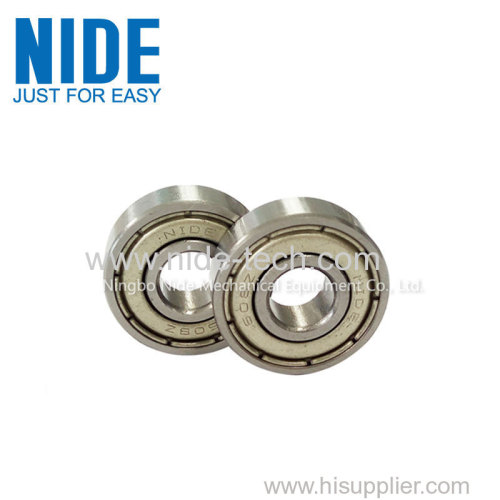


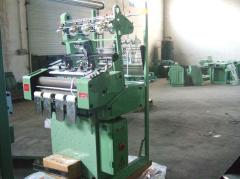
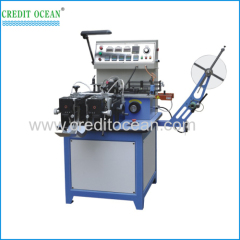
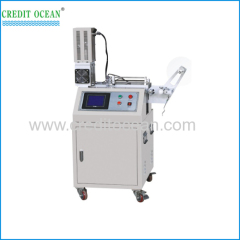
.jpg)

